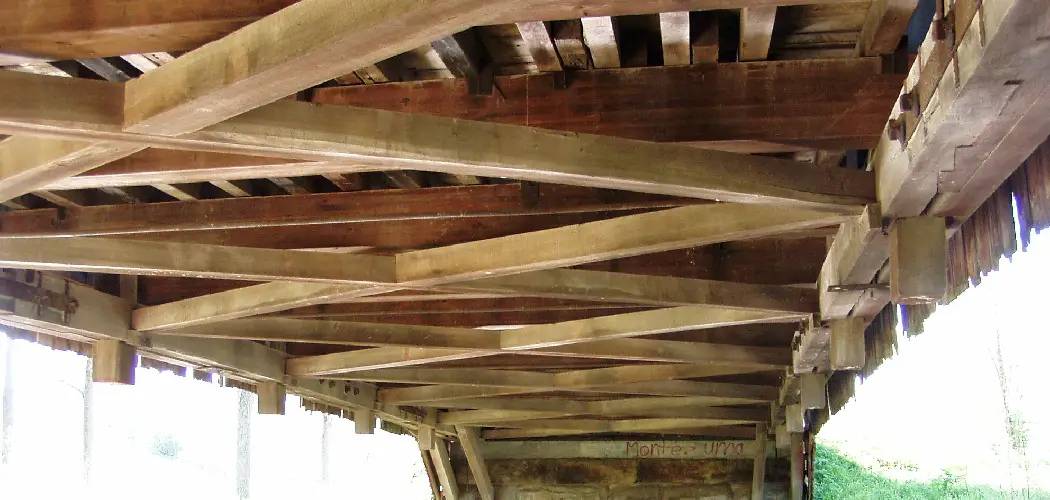When building a deck, it is important to make sure that it is stable and will not sway in the wind. One way to do this is to brace the deck with diagonal bracing. This will help to keep the deck from moving and swaying in the wind. In this blog post, we will show you how to brace a deck from swaying using diagonal bracing.
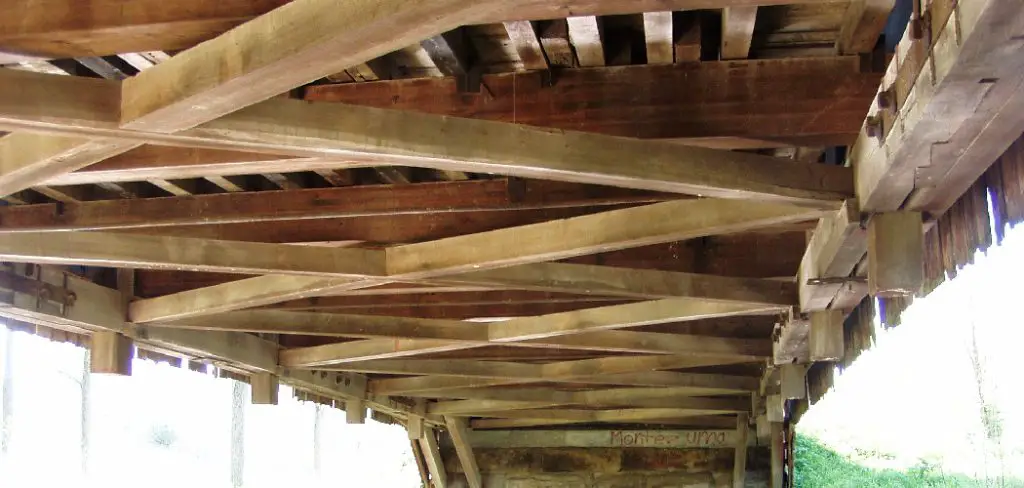
Even if your deck is well-built, it can still sway in the wind. This not only looks bad but can also be a safety hazard. If you’re concerned about your deck’s stability, this blog post will help you out. So, without any further ado, let’s get started!
What is Diagonal Bracing?
Diagonal bracing is a method of reinforcement used to stabilize structures, such as decks. It involves installing diagonal pieces of lumber between the joists and beams of the deck. This creates a strong cross-brace that helps to prevent swaying or racking. It is a simple and cost-effective way to increase the stability of your deck. You can use diagonal bracing for both wood and composite decks.
Why is It Important to Brace a Deck From Swaying?
There are many reasons why it’s important to brace a deck from swaying. Such as:
1. Prevent the Deck From Collapsing
A deck that is not properly braced is more likely to collapse, especially during high winds. By bracing the deck, you can help to prevent this from happening. So, it’s important to brace your deck from swaying, not only for your safety but also to prevent any damage that could be caused by a collapse.
2. Prevent the Deck From Toppling Over
Another reason why it’s important to brace a deck from swaying is to prevent it from toppling over. If the deck is not properly braced, it can easily be blown over by strong winds. This can cause serious damage to the deck, as well as any property or people that happen to be nearby.
3. Prevent Swaying in High Winds
When a deck is properly braced from swaying, it will be much less likely to sway in high winds. This is extremely important, as swaying can cause the deck to collapse. By bracing the deck, you can help to keep it stable in high winds and prevent any accidents from happening.
4. Prevent Damage to the Deck
If a deck is not properly braced, it can be damaged by high winds or even by its own weight. By bracing the deck, you can help to prevent this from happening. So, not only will you be saving yourself from potential problems, but you’ll also be protecting your investment.
5. Increase the Life of the Deck
A well-built and properly maintained deck can last for many years. However, a deck that is not properly braced is more likely to suffer from damage and wear and tear. By bracing the deck, you can help to increase its life and prevent any unnecessary repairs.
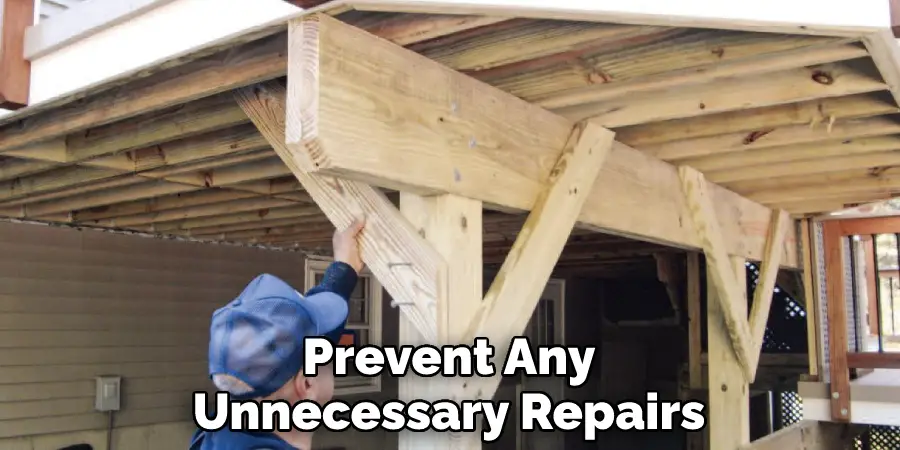
Things You Will Need to Brace a Deck From Swaying
Tape Measure:
You will need a tape measure to accurately measure the length of the diagonal braces.
Deck Screws:
Deck screws are recommended for this project as they are strong and durable, making them ideal for bracing a deck.
Drill:
A drill will be needed to screw in the deck screws.
Level:
To ensure that your deck is properly braced, you will need a level to make sure the diagonal braces are installed correctly.
Saw:
If your diagonal braces need to be cut to fit, you will need a saw for this task. A circular saw or hand saw will work best.
Safety Gear:
Whenever doing any type of construction, it’s important to wear safety gear such as gloves and goggles to protect yourself from potential hazards.
How to Brace a Deck From Swaying in 11 Steps
Step 1: Measure the Deck’s Dimensions
Start by measuring the length and width of your deck. You have to make sure that the braces you’re going to install are long enough to provide adequate support. If you’re not sure how long they should be, it’s always better to err on the side of caution and cut them a little longer. You can always trim them down later if needed. But if they’re too short, you’ll have to start all over again. Always measure twice to ensure accuracy.
Step 2: Cut the Braces
Next, you’ll need to cut the braces to size. Be sure to use a saw that can make clean, straight cuts. If the cuts are not straight, the braces will not fit properly. It’s also important to make sure that the ends of the braces are cut at a 45-degree angle, as this will help to distribute weight evenly and provide better support. You can also purchase pre-cut diagonal braces if you’re not comfortable cutting them yourself.
Step 3: Drill Holes for the Braces
Once the braces are cut to size, you’ll need to drill holes for them. The holes should be large enough for the bolts that will be used to secure the braces. Make sure that the holes are evenly spaced so that the braces will be secure. Otherwise, the deck may still sway. You can also use a template to make sure the holes are evenly spaced. It’s important to note that the holes should be drilled at a 45-degree angle.
Step 4: Install the Braces
Now, it’s time to install the braces. First, insert the bolts through the holes in the braces. Then, screw them into place. Be sure to tighten the bolts until they are snug. Be careful not to over-tighten them, as this could damage the braces. Once the braces are secured, you can trim any excess length from the bolts using a saw or bolt cutters. The braces should now be firmly in place. It’s important to check that they are level at this point.

Step 5: Attach the Braces to the Deck
Once the braces are installed, you’ll need to attach them to the deck. This can be done with screws or nails. Be sure to use screws that are long enough to penetrate through the thickness of the decking material. If you’re using nails, make sure they are long enough to hold the braces securely. The number of screws or nails needed will depend on the size of your deck and the length of the braces. It’s important to evenly distribute the screws or nails for maximum support.
Step 6: Check the Braces for Stability
After the braces are attached to the deck, you’ll need to check them for stability. Make sure that they are secure and that there is no movement. Also, check to see if the deck is level. If it isn’t, you may need to adjust the braces. It’s important to note that the deck may still have some slight movement, but this is normal. You just want to make sure that the braces are providing enough support to prevent any significant swaying. The level will be your best tool for ensuring stability.
Step 7: Install Additional Braces if Needed
Depending on the size and shape of your deck, you may need to install additional braces for extra support. This is especially important for larger decks or decks with multiple levels. Follow the same steps as before to install the additional braces. Make sure they are evenly spaced and securely attached to both the deck and the existing braces. Otherwise, they won’t be effective in preventing swaying.
Step 8: Secure All Braces Properly
Once all the braces are in place, go back and double-check that they are all secure. This will help to ensure that your deck is fully braced and stable. If you find an area that is still swaying, you may need to add more braces or adjust the existing ones. It’s important to take the time to thoroughly check and secure all braces for maximum stability. You don’t want to cut corners and risk damage or injury. Although it may seem tedious, it’s worth the effort in the long run. The stability and safety of your deck depend on it.
Step 9: Paint/Stain the Braces
To make your braces blend in with the rest of your deck, you can paint or stain them to match. This will also help to protect them from exposure to the elements and prolong their lifespan. Make sure to use a paint or stain that is suitable for outdoor use and follow the manufacturer’s instructions for application. It’s best to do this before attaching the braces to the deck, but you can also do it afterward if necessary. The choice is up to you. Remember, aesthetics are important, but safety should always be the top priority.
Step 10: Sand Down Any Rough Edges
If there are any rough edges on the braces, sand them down to avoid any potential injuries. This step is especially important if you have children or pets who may be running and playing on the deck. Take a few extra minutes to sand down any rough spots for safety purposes. If you use pre-cut braces, this may not be necessary, but it’s still a good idea to check for any sharp edges. You can also use a wood sealer or varnish to protect the braces further. You can never be too cautious when it comes to safety. The braces may not be the most exciting part of building a deck, but they are essential for its stability and safety.
Step 11: Paint or Stain the Braces
Finally, you can paint or stain the braces to match the color of your deck. This will not only make them look better but also help to protect them from weather damage. Be sure to use a paint or stain that is suitable for outdoor use and follow the manufacturer’s instructions for application. This will not only give your deck a cohesive look but also add an extra layer of protection for your braces, ensuring they last for years to come.
Now that you know how to brace a deck from swaying, you can enjoy your outdoor space without any worries. Just remember to take the time to properly measure, cut, and secure the braces for maximum stability. By following these steps, you’ll have a sturdy and safe deck that will provide years of enjoyment for you and your family. Happy decking!
Additional Tips to Brace a Deck From Swaying
1. Ensure That Your Deck is Properly Braced
If you want to be sure that your deck is properly braced, it’s a good idea to consult a professional. They will be able to assess the situation and recommend the best course of action.
2. Use High-Quality Materials
When you’re installing braces, it’s important to use high-quality materials. This will help to ensure that the braces are durable and will last for many years.
3. Inspect the Braces Regularly
Even if you’ve installed the braces correctly, it’s important to inspect them regularly. This will help to ensure that they are still in good condition and that they are providing adequate support.
4. Use Galvanized Screws or Nails
To prevent rust, it’s a good idea to use galvanized screws or nails. This will help to prolong the life of the braces and keep them looking new.
5. Be Careful When Digging Holes
When you’re drilling holes for the braces, be careful not to damage the decking material. If you do, it could cause the deck to become unstable.
6. Use Diagonal Braces
If you’re concerned about the stability of your deck, you may want to consider using diagonal braces. This type of brace is attached at an angle and provides additional support.
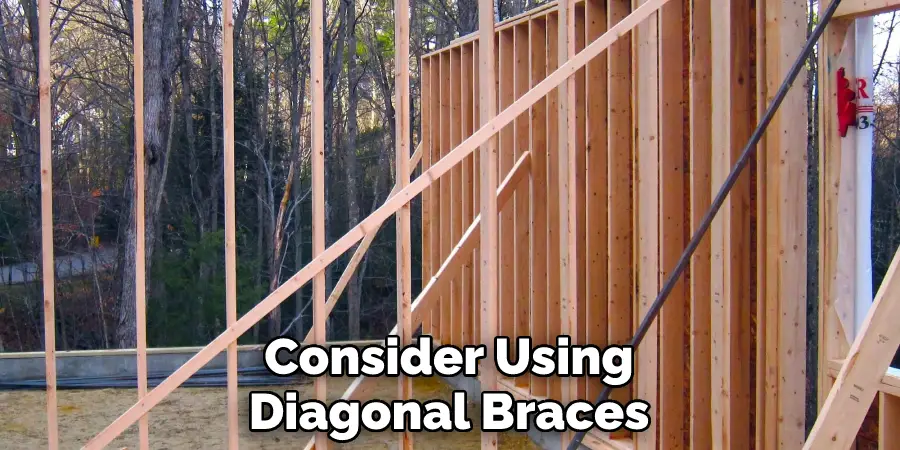
7. Install Post Anchors:
Another way to provide support for your deck is to install post anchors. These devices attach to the decking material and help to keep the posts in place.
8. Use L-Brackets
L-brackets can also be used to provide support for your deck. These brackets are installed at the corners of the deck to help keep it square.
9. Add Cross Braces
If you want to add even more support to your deck, you can install cross braces. These braces are installed between the joists to help keep them from moving.
10. Hire a Professional
If you’re not confident in your ability to properly brace your deck, you may want to hire a professional. They will be able to assess the situation and provide the best solution.
Frequently Asked Questions
How Much Weight Can a Deck Hold?
Most decks are designed to support 60 pounds per square foot, but some builders construct them to hold more weight. Decks built with additional reinforcement can hold 100 pounds per square foot or more. How much weight you’ll need to support will depend on the size and type of structure you’re building.
Can a Deck Hold 5000 Lbs?
It’s possible to build a deck that can hold up to 5000 lbs, but it’s important to note that the larger the structure is, the more weight it will be able to support. It’s also worth mentioning that while a deck can hold a large amount of weight, it’s not always necessary to build one that can support such a large load.
Can My Deck Support a Hot Tub?
The answer to this question depends on the size and weight of the hot tub, as well as the deck’s design. Most decks are designed to support a hot tub that weighs up to 2000 pounds. However, if you have a larger or heavier hot tub, you may need to reinforce your deck to accommodate the additional weight.
What is Sway Bracing?
Sway bracing is a type of reinforcement that is used to prevent a structure from swaying. It is typically used in taller structures, such as skyscrapers, but can also be used in smaller structures, such as decks. There are several different types of sway bracing, but the most common is diagonal bracing.
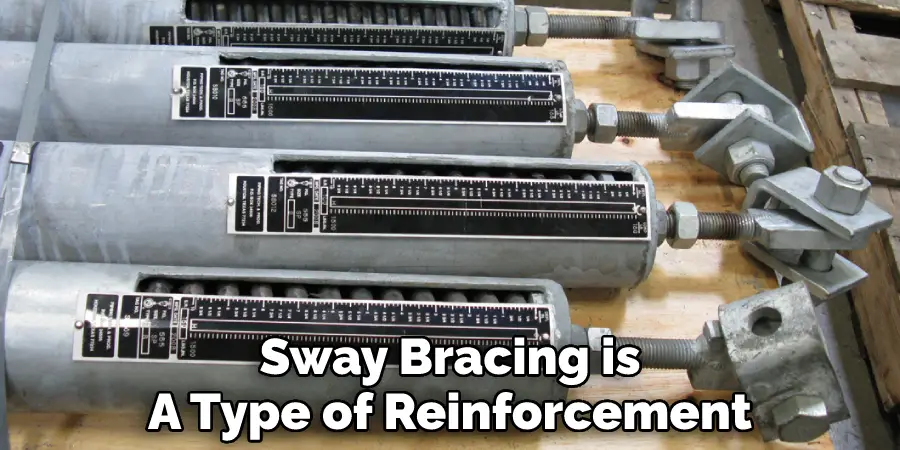
Conclusion
Swaying decks can be dangerous and are often caused by high winds. By following the tips above, you can help to know how to brace a deck from swaying. If you have any questions about how to brace a deck or if you need help with your deck, contact a local deck builder today.
When you’re ready to brace your deck against swaying, talk to a contractor about the best way to do so, given the structure of your home. You can also follow these tips on your own to help ensure that your deck is secure against high winds. With a little bit of planning and effort, you can keep your family safe and sound while enjoying time outdoors on your deck.

